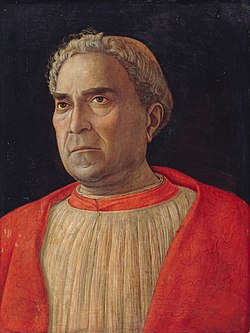Criticism and effects
Not all the leaders of the Church were in favor of a Crusade. The Venetian Cardinal Ludovico Trevisan, patriarch of Aquileia, met Pius in Siena, on 16 March 1459, and followed the pope to Mantua, although he opposed the aims of the Council. [3]
By the time the Council was disbanded in January 1460, an ineffectual call for a new crusade against the Infidel had been decided upon, and proclaimed by Pius on 14 January 1460. One of the only European rulers to fully endorse the Crusade was Vlad III, though he was too preoccupied defending his native Wallachia to contribute troops. [4] The paper crusade was to last for three years and was to prove ineffectual. Pius would die in Ancona, making one last effort to launch this campaign by his own example.
Pope Pius II had originally called for a crusade against the Turks in 1456, with limited success. But at the council, he again called for the crusade only to be turned down by the leaders of Western powers. He surmised it was both because they were too caught up fighting one another, [a] because they were afraid of the Turkish power and because the Hungarians had been too successful in their own battles with the Turks. [6]
Historians of the Tarot like Heinrich Brockhaus [7] have asserted that the so-called Tarocchi di Mantegna were devised and made during the sitting of this council.
This page is based on this
Wikipedia article Text is available under the
CC BY-SA 4.0 license; additional terms may apply.
Images, videos and audio are available under their respective licenses.

